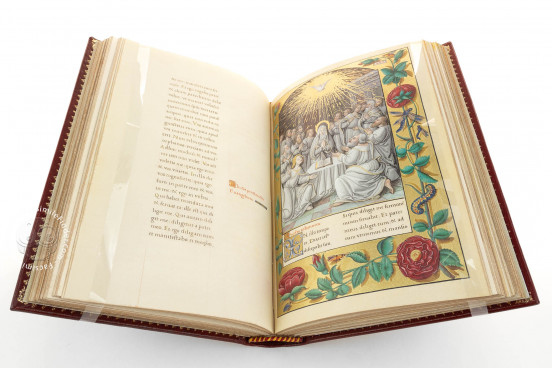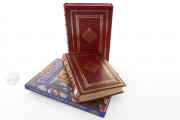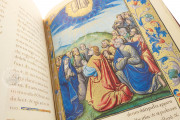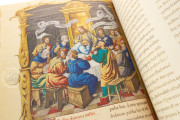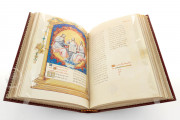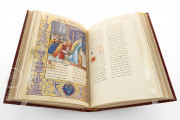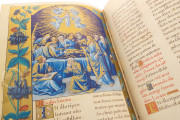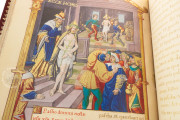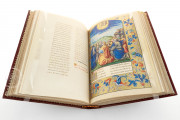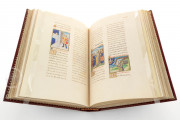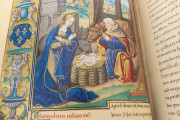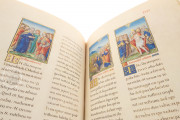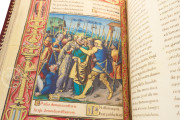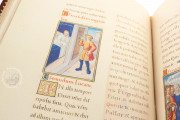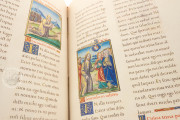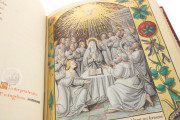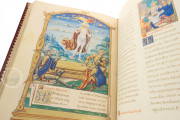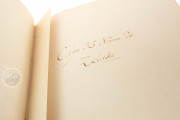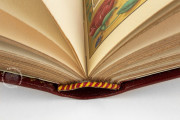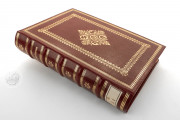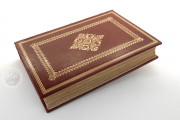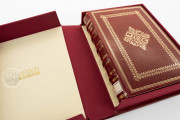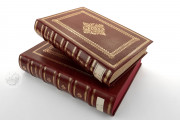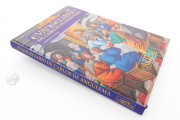The Gospel Lectionary of Charles, Duke of Orléans, was made in Tours between 1526 and 1536. It is a book of excerpts from the accounts of the life of Christ in the Christian Bible. It was made for the young Charles, future Duke of Orléans, perhaps at the behest of one or both of his parents, Francis I, King of France, and his consort, Claude of France. Three-quarter-page miniatures with full borders introduce twenty major holidays and Sundays. Column miniatures open 123 less important feasts.
The excerpts are arranged in the order in which the deacon would read them at Mass. The cycle begins with Advent, the season of preparation for Christmas: the paintings illustrate either the feast day or the event described in the reading.
The Nativity and Passion of Christ in Images
Because the reading for the first Sunday in Advent, taken from the gospel of Matthew, describes Christ's Entry into Jerusalem, the first miniature illustrates that event: Jesus, as described in the biblical account, is pictured entering the city riding on an ass with townspeople spreading their garments before him and gathering branches from a tree (fol. 1r).
The following three large miniatures show events of the Christmas season: the Adoration of the Christ Child (fol. 6v), the Circumcision (fol. 8r), and the Adoration of the Magi (fol. 9r). The cycle of large miniatures starts again at Palm Sunday with six scenes of Christ's Passion from the Last Supper (fol. 45v) to the Ascension (fol. 78r).
Symphony in Blue and Gold
The large miniature of the Dormition and Assumption of the Virgin is—more than any other miniature in the book—dominated by gold and a range of values of bright blue (fol. 134v). The Virgin is shown on her deathbed surrounded by the apostles, all dressed in blue rendered with generous highlights of gold. Above, the Virgin receives her heavenly crown in an extravagant golden aureole.
Strewn Flower Borders and Architectural Frames
The pages with large miniatures all have fully painted borders. Many are in the French version of the strewn flower type, with whole illusionistic plants and insects that appear to cast shadows on golden backgrounds. Other borders feature motifs derived from ancient Roman wall painting. Still others create fictive frames of classicizing architectural design. The arms of Orléans-Angoulême appear in many of the borders.
Made for a Prince's Private Contemplation
The book is small enough to be held in the hands without a lectern and—despite its liturgical content—was probably intended for private contemplation. Charles could have read the Bible stories in the annual cycle of their presentation in the book, or he could have used the miniatures to help locate a particular story.
Twin Manuscripts
Charles's gospel lectionary has an artistic twin in the Casanatense Gospel Lectionary, made for his oldest brother, François (1518-1536), the heir apparent to the throne of France. The texts are identical, and their miniatures were copied from a common exemplar.
The Script of Humanism
The text is written in Humanistic Minuscule, a script developed in Italy in the fifteenth century that spread to the rest of Europe by the end of the century. The decorated initials are gold capital letters imitating the look of the square letters of ancient Roman inscriptions.
A Cardinal, a Cathedral, and a National Library
In the late eighteenth century, the manuscript was in the possession of the bibliophile cardinal Francesco Saverio de Zelada (d. 1801), who bequeathed it to the Catedral de Toledo. It entered the collection of the Biblioteca Nacional in 1869. The binding of gold-tooled red leather dates from the late nineteenth century.
We have 1 facsimile edition of the manuscript "Gospel Lectionary of Charles, Duke of Orléans": El Evangeliario del Duque de Orleans - Angulema facsimile edition, published by CM Editores, 2012
Request Info / Price
